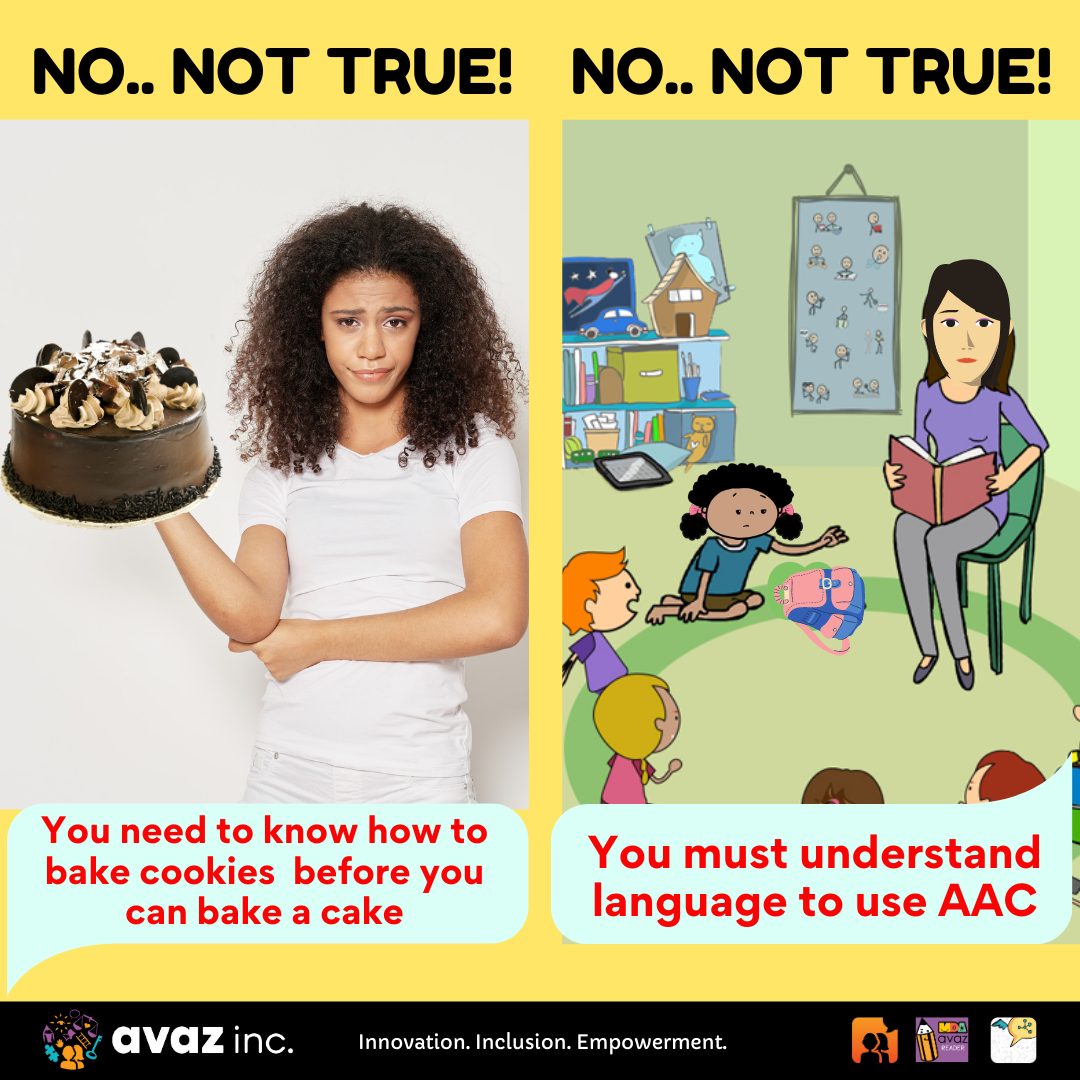Augmentative and alternative communication (AAC) is the name given to devices and apps that can help non-verbal children with cerebral, autism, mental retardation, Downs syndrome and other disabilities to communicate. While developing and demonstrating Avaz, I’ve heard parents express numerous misconceptions about AAC. A child with special needs isn’t empowered to make his or her own choices about AAC, which is why a parent’s misconceptions are doubly dangerous.
Here are some of the most popular ‘myths’ I’ve heard:
1. My child can talk – if she uses an AAC aid, she will not feel motivated to develop natural speech.
This is the most dangerous myth of all. Some non-verbal autistic children go on to become verbal and some do not. Withholding communication and trying to insist on natural speech prevents a child from experiencing a normal childhood, with new experiences, expressing curiosity, and making friends. Even for those children who do become verbal eventually, research has shown that using an AAC aid actually assists the process, instead of inhibiting it.
2. My child is too young to get started with AAC.
This is related to the ‘can talk’ myth. Thirty years of AAC use have demonstrated very clearly that early intervention is key to managing autism and other disabilities effectively. The brain is very plastic before the age of 6 – new neurons are created, and new connections are formed between different parts of the brain. Picture-based AAC aids for autism work by bypassing the brain’s verbal center and instead using the visual center or language-planning center for developing language. The earlier the intervention, the greater the likelihood of success. I’ve seen stellar successes in AAC intervention with kids as young as 2.
3. My child doesn’t have the cognitive ability to ever be able to read or write.
This is false in the vast majority of cases – no child is too intellectually impaired or autistic to read or write. And it is certainly the wrong attitude to not even try. In children with autism, difficulties in literacy stem from the complicated symbolism of language: alphabets, written words and spoken words have no relationship at all to the objects they refer to, and it is hard for a child with autism to learn these abstractions. That’s why literacy seems hard for them. However, if we replace words with pictures, the symbolism is much easier, and many children with autism can access reading materials and education, so long as it is in a format that they can easily access.
4. Investing in education and AAC is ultimately pointless: my child will never be able to join mainstream society.
This is sadly true in many countries today, but in twenty years’ time, it’s going to be comprehensively false. We’ve come a long way in integrating people with visual and hearing impairment into mainstream society, and children with autism can achieve integration even faster. The real question is: when opportunities in society do arise, will your child be prepared? – the only way is to invest in education and AAC now.
5. AAC aids aren’t good enough to replace natural speech – so my kid shouldn’t use it.
It’s true that language and speech are two of the most complex functions of the brain, and it will be a long time before we can perfectly replicate them in computers. But the pace of research and development in this space has never been faster, and with the iPad and other tablets becoming so common in autism intervention, the number of people working on the problems increases every day. It isn’t necessary for the technology to be perfect for it to be useful. The mistake is not to try – the biggest mistake is to withhold something useful, just because of a myth or a misconception.



